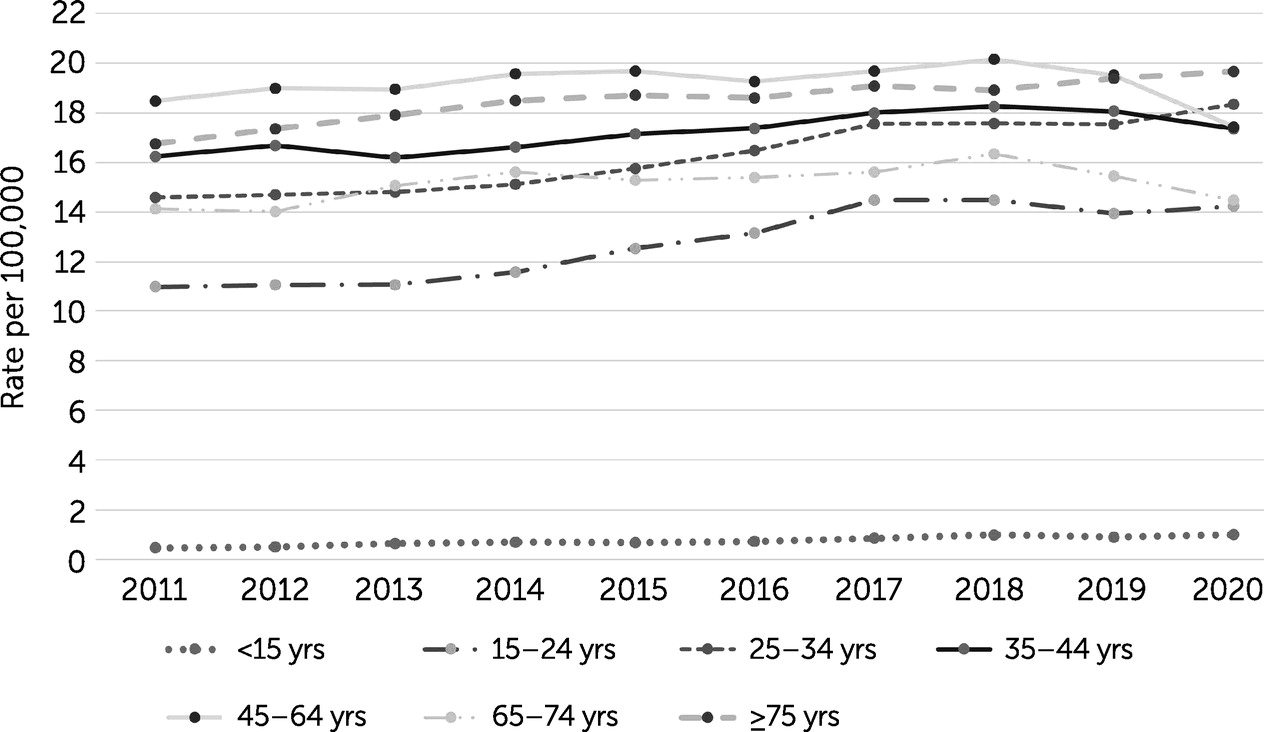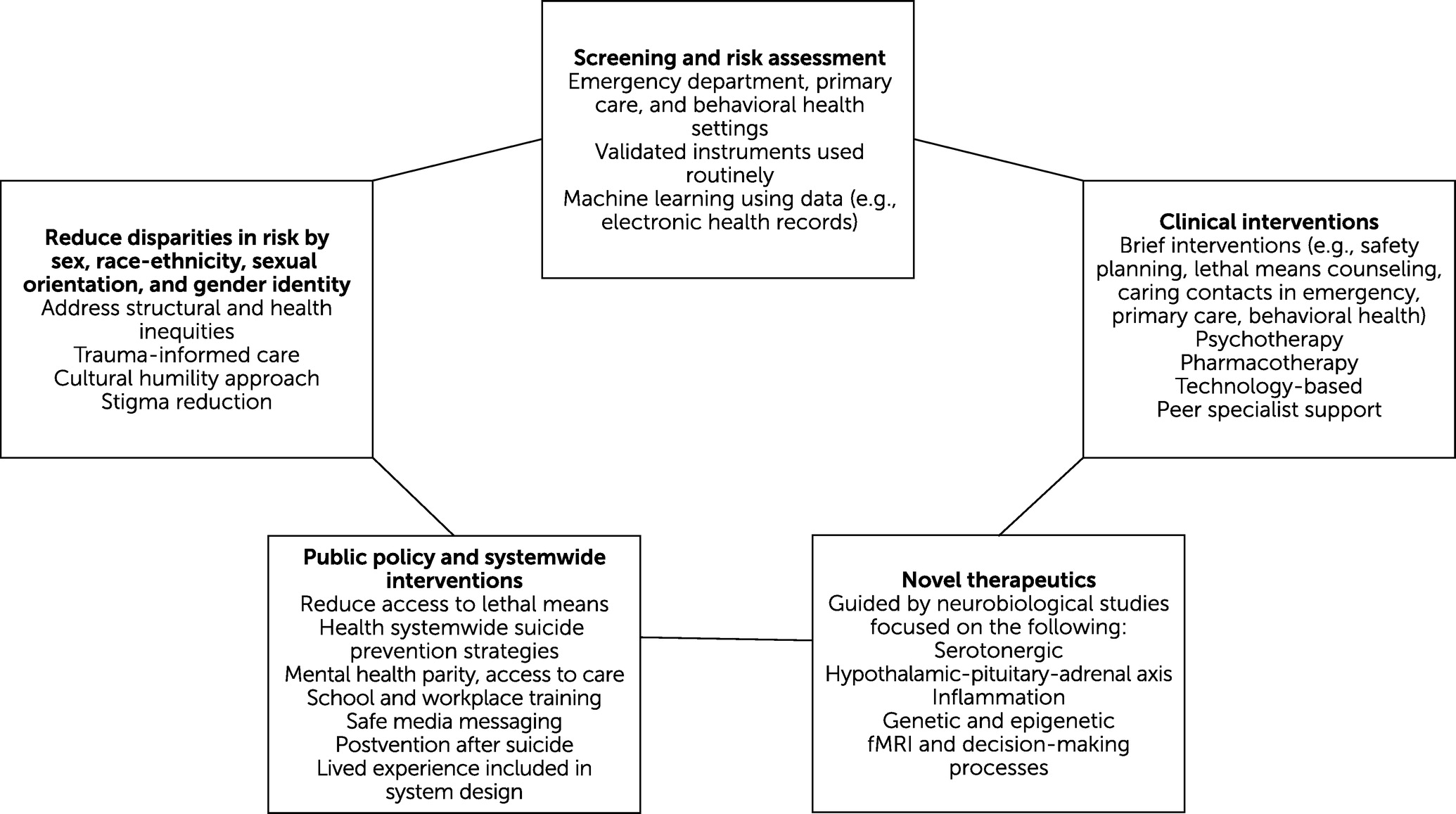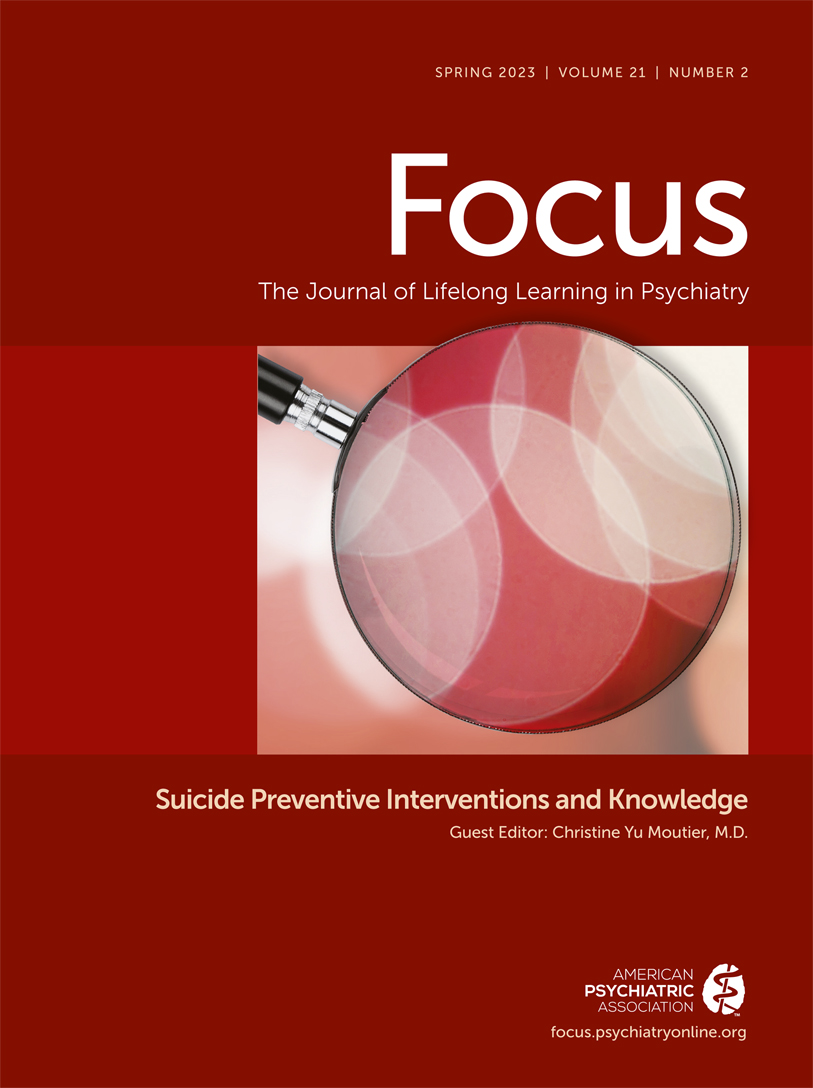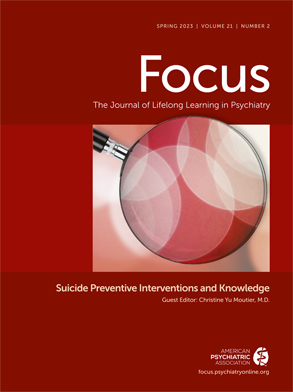Implementing Evidence-Based Suicide Prevention Strategies for Greatest Impact
Abstract
Epidemiology of Suicide and Suicidal Behavior in the United States


Pathophysiology of Suicidal Behavior
Serotonergic Systems
HPA Axis Activity
Inflammation
Role of Decision-Making Brain Processes in Suicidal Behavior
Psychological Theories on the Causes of Suicide
Prediction, Screening, and Identification of High-Risk Patients
Prevention of Suicide and Suicidal Behavior

Universal Prevention
Brief Interventions for Suicidal Patients
| Safety plan component | Example |
|---|---|
| Identify triggers for suicidal urges | Argument with significant other; intoxication |
| Develop personal ways to avoid triggers | Try to avoid controversial topics; engage in temporary abstinence; limit time with certain individuals |
| Identify personal ways to cope with suicidal urges | Distractions, such as taking a walk, listening to music; relaxation through slow breathing |
| Identify interpersonal ways to cope with suicidal urges | Call or meet a friend |
| Contact professional or crisis services | Call therapist, emergency department, crisis services; contact 988 (call, text, or chat) or crisis text line (text “TALK” to 741741) |
| Secure environment | Remove or secure firearms, medications, substances, sharps, cleaning supplies |
BOX 1. Patient and family suicide prevention resources
To learn more and access resources:
To learn about evidence-based treatments for reducing suicide risk:
To help patients find specialized treatment:
Patient and family education resources:
After Suicide Loss and Healing:
Evidence-Based Psychotherapies for Suicidal Patients
Pharmacotherapy
Public Policy and Systemwide Interventions
Health Equity Solutions
Conclusions
References
Information & Authors
Information
Published In
History
Keyword
Authors
Funding Information
Metrics & Citations
Metrics
Citations
Export Citations
If you have the appropriate software installed, you can download article citation data to the citation manager of your choice. Simply select your manager software from the list below and click Download.
For more information or tips please see 'Downloading to a citation manager' in the Help menu.
View Options
View options
PDF/EPUB
View PDF/EPUBLogin options
Already a subscriber? Access your subscription through your login credentials or your institution for full access to this article.
Personal login Institutional Login Open Athens loginNot a subscriber?
PsychiatryOnline subscription options offer access to the DSM-5-TR® library, books, journals, CME, and patient resources. This all-in-one virtual library provides psychiatrists and mental health professionals with key resources for diagnosis, treatment, research, and professional development.
Need more help? PsychiatryOnline Customer Service may be reached by emailing [email protected] or by calling 800-368-5777 (in the U.S.) or 703-907-7322 (outside the U.S.).

